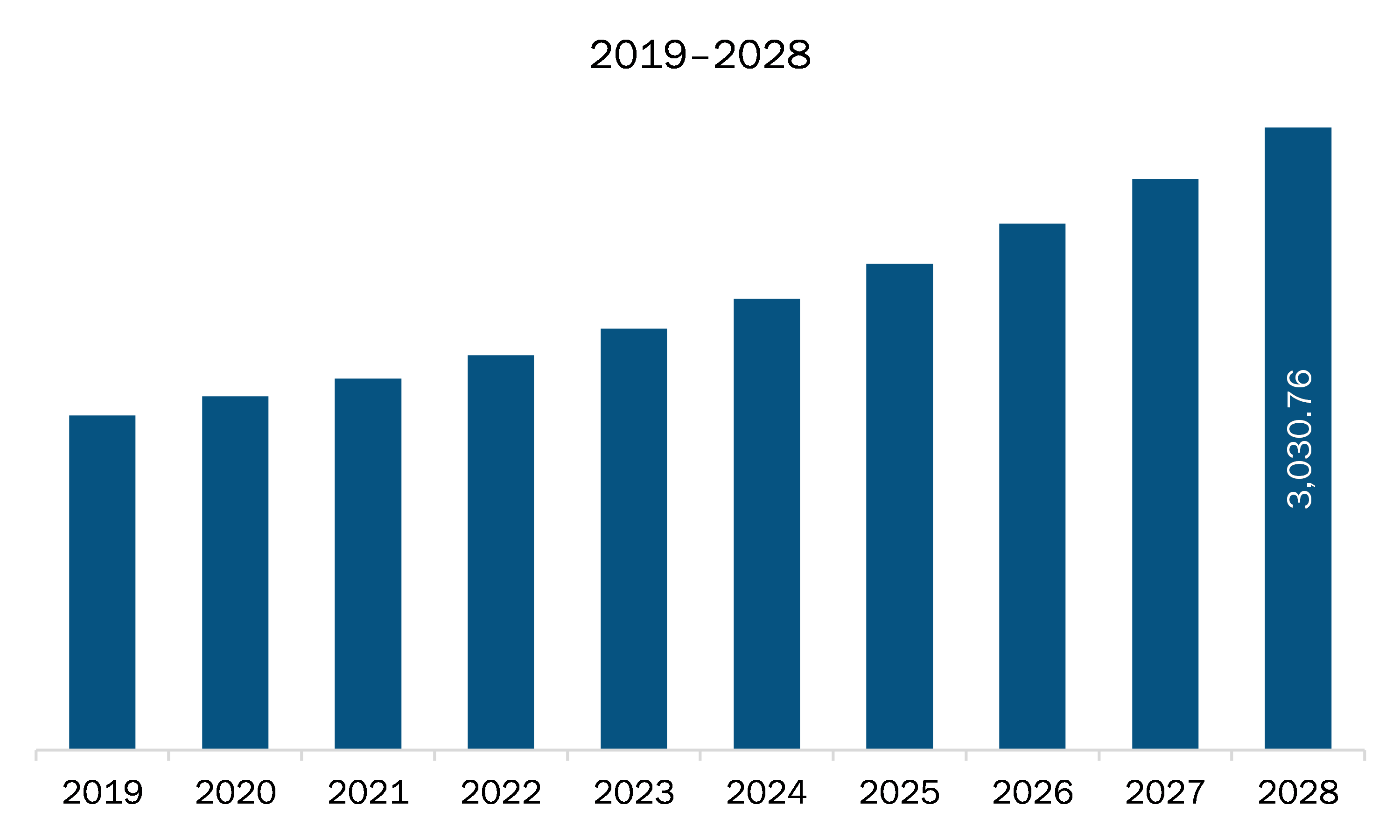The Europe industrial inkjet printers market is expected to grow from US$ 1807.75 million in 2021 to US$ 3,030.76 million by 2028; it is estimated to grow at a CAGR of 7.7% from 2021 to 2028.
The industrial inkjet printers market in Europe comprises Germany, France, Italy, the UK, Russia, and the rest of Europe. The increasing adoption of industrial inkjet printers in various industries in Europe is going to have a positive impact on the industrial inkjet market in the region. The rising demand for packaging in Europe is having a positive impact on the industrial inkjet printer market. The technological innovation, sustainability, and attractive economics are among the factors driving the growth of consumer packaging industry in Europe. With the rising focus on sustainability, consumers are preferring recyclable carton packaging over plastic or tin packaging. The growing demand for customer-friendly packages as well as heightened product protection is expected to boost the adoption of sustainable consumer packaging as a viable and cost-effective solution, which, in turn will drive the growth of the industrial inkjet printer market in Europe.
In case of COVID-19, in Europe, especially France, witnessed an unprecedented rise in number of coronavirus cases, which led to the discontinuation of industrial inkjet printers manufacturing activities. Downfall of other consumer goods manufacturing sectors has negatively impacted the demand for industrial inkjet printers during the early months of 2020. Moreover, decline in the overall industrial manufacturing activities has led to discontinuation of industrial inkjet printers manufacturing projects, thereby reducing the demand for industrial inkjet printers. Similar trend was witnessed in other Europe countries, i.e., Russia, UK, Italy, Spain and Germany. However, the countries are likely to overcome thus drop in demand with the economic activities regaining their pace, especially in the beginning of the 2021.

- This FREE sample will include data analysis, ranging from market trends to estimates and forecasts.
Europe Industrial Inkjet Printers Market Segmentation
-
Europe Industrial inkjet printers Market – By Technology
- CIJ Printer
- DOD Inkjet Printer
-
Europe Industrial Inkjet Printers Market – By End-User
- Food and Beverages
- Automobile
- Packaging
- Cosmetic
- Medical
- Others
-
Europe Industrial Inkjet Printers Market – By Country
- Germany
- France
- Italy
- UK
- Russia
- Rest of Europe
Europe Industrial Inkjet Printers Report Scope
| Report Attribute | Details |
|---|---|
| Market size in 2021 | US$ 1807.75 Million |
| Market Size by 2028 | US$ 3,030.76 Million |
| CAGR (2021 - 2028) | 7.7% |
| Historical Data | 2019-2020 |
| Forecast period | 2022-2028 |
| Segments Covered |
By Technology
|
| Regions and Countries Covered |
Europe
|
| Market leaders and key company profiles |
|
- Historical Analysis (2 Years), Base Year, Forecast (7 Years) with CAGR
- PEST and SWOT Analysis
- Market Size Value / Volume - Regional, Country
- Industry and Competitive Landscape
- Excel Dataset
Recent Reports
Testimonials
Reason to Buy
- Informed Decision-Making
- Understanding Market Dynamics
- Competitive Analysis
- Identifying Emerging Markets
- Customer Insights
- Market Forecasts
- Risk Mitigation
- Boosting Operational Efficiency
- Strategic Planning
- Investment Justification
- Tracking Industry Innovations
- Aligning with Regulatory Trends






















 Get Free Sample For
Get Free Sample For